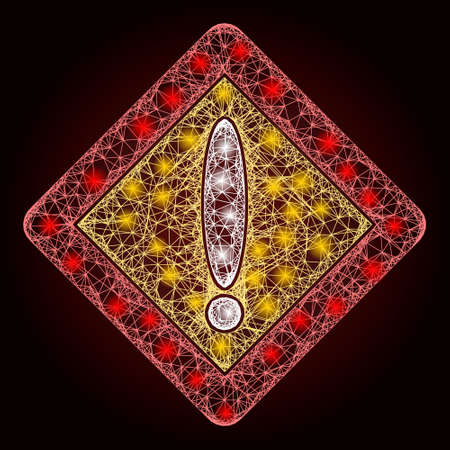Introduction to Kundli Matching in Indian Matrimony
Kundli matching, also known as horoscope matching, holds a place of immense importance in Indian matrimony. Rooted deeply in the cultural and traditional fabric of Indian society, this ancient practice is more than just a ritual; it is considered an essential step before finalising any marriage alliance. In India, marriage is not merely the union of two individuals but a sacred bond that ties together two families, their values, and destinies. As per Vedic astrology, every individual’s birth chart or ‘Kundli’ encapsulates planetary positions and cosmic influences at the time of their birth, which are believed to shape their personality, health, career, and marital life. The process of Kundli matching involves comparing the horoscopes of the prospective bride and groom to assess compatibility on various fronts such as mental alignment, emotional balance, physical health, financial stability, and longevity of marital bliss. Traditionally known as ‘Guna Milan’ in North India and ‘Porutham’ in South India, this process reflects the collective wisdom passed down through generations, highlighting the belief that aligning astrological factors can ensure harmony and mitigate challenges in married life. As families across diverse regions of India continue to uphold these practices with great reverence, understanding the intricacies of Kundli matching—including the crucial role played by divisional charts like Navamsa—becomes vital for anyone seeking a prosperous and harmonious marital union.
2. What is Navamsa Chart and its Role in Vedic Astrology
The Navamsa Chart, also known as the D-9 chart, holds a unique and pivotal position in Vedic astrology, especially within the context of marriage compatibility or Kundli Milan. Derived from the Sanskrit word “Navamsa,” which means “one-ninth part,” this divisional chart is created by dividing each zodiac sign into nine equal parts, resulting in a more granular astrological analysis. The Navamsa chart is believed to reveal the deeper essence of an individual’s planetary positions, supplementing the main birth chart (Rasi chart) and providing profound insights that are otherwise not visible.
Astrological Background of Navamsa (D-9) Chart
In traditional Indian astrology, the Navamsa chart is used to assess various aspects of life, but its primary significance lies in evaluating marital harmony, spouse characteristics, and overall happiness in married life. The D-9 chart acts as a spiritual blueprint that reflects the strength and true potential of planets related to marriage and relationships. While the Rasi chart displays the outer circumstances, the Navamsa uncovers the inner realities and hidden traits that emerge over time—particularly after marriage.
Why Navamsa is Crucial in Marriage Compatibility
Indian astrologers consider the Navamsa chart indispensable for Kundli matching because it validates and deepens the predictions made from the Rasi chart. Some key reasons include:
| Aspect | Main Birth Chart (Rasi) | Navamsa Chart (D-9) |
|---|---|---|
| Visible Traits | External personality & life events | Inner qualities & potential growth |
| Marriage Prediction | Tendencies towards marriage | Longevity & quality of married life |
| Planetary Strength | Status at birth | Maturity and actual impact over life |
Cultural Context in India
Within Indian society, where arranged marriages are common, families often consult experienced astrologers to compare both partners’ Rasi and Navamsa charts. The D-9 chart helps identify subtle compatibilities or challenges that might affect marital stability. It is also customary to examine the placement and dignity of Venus (for men) and Jupiter (for women), along with the 7th house lord in both charts, to gauge prospects for love, understanding, progeny, and mutual support.

3. How Navamsa Chart Complements the Birth Chart (Janma Kundli)
In Indian astrology, the relationship between the Lagna chart (birth chart or Janma Kundli) and the Navamsa chart is foundational for accurate marriage compatibility assessment. While the Lagna chart provides insights into an individual’s basic personality, physical attributes, and overall life direction, it is the Navamsa chart that reveals the deeper dimensions of marital life and spousal harmony.
The Janma Kundli is like the blueprint of a person’s life, mapping out planetary positions at the time of birth. However, marriage is a significant samskara in Hindu culture, and its success depends on subtle factors not always visible in the main birth chart. Here, the Navamsa chart acts as a magnifying glass, offering a more nuanced perspective. It breaks down each zodiac sign into nine divisions (Navamsas), thus adding granularity to planetary strengths and relationships relevant to marriage.
The interplay between these two charts forms the backbone of Kundli matching (Vivah Milan). Astrologers first evaluate planetary positions, aspects (drishti), and yogas in the Lagna chart to judge general compatibility. However, by overlaying this analysis with the Navamsa chart, they can see if benefic influences in the birth chart are truly strong or merely superficial. For instance, a well-placed Venus or Jupiter in the birth chart may not guarantee marital bliss unless their positions are also favourable in the Navamsa.
Moreover, D-9 (Navamsa) highlights how planets behave specifically regarding partnership and married life. It helps identify potential issues related to intimacy, emotional bonding, mutual respect, and spiritual connection—factors highly regarded in Indian marriages. Thus, while the Janma Kundli sets the stage for compatibility analysis, it is the Navamsa that confirms and deepens these insights, ensuring that matches are robust both astrologically and culturally.
4. Key Factors Analysed in Navamsa Chart for Marriage Compatibility
The Navamsa chart, or D-9 chart, is considered the soul of a birth chart in Indian astrology and holds paramount importance in assessing marital prospects and compatibility. In the context of kundli matching, astrologers deeply examine specific factors within the Navamsa to predict the strength and harmony of a potential marriage. Below is a breakdown of these essential aspects:
Placement of Venus
Venus, known as Shukra in Vedic astrology, is the primary significator (karaka) of love, romance, and marital happiness. Its position in the Navamsa chart is closely scrutinised to judge an individual’s approach to relationships and capacity for conjugal bliss.
| Navamsa Placement of Venus | Indicative Marital Outcome |
|---|---|
| Strong & Benefic Houses | Harmonious relationship, emotional fulfillment |
| Afflicted or Debilitated | Challenges in intimacy, discord in marriage |
Role of Jupiter
Jupiter (Guru) is the karaka for wisdom and guidance, especially significant for women’s marriage prospects. A well-placed Jupiter in the Navamsa denotes a supportive and prosperous married life.
| Navamsa Placement of Jupiter | Interpretation for Marriage |
|---|---|
| Exalted/Own House | Blessings in married life, wise partner choices |
| Afflicted by Malefics | Delay or obstacles in marriage, lack of harmony |
The Seventh House and Its Lord in Navamsa
The seventh house (Saptama Bhava) signifies partnership and spouse. Both its condition and that of its lord are pivotal in forecasting marital compatibility.
| Seventh House Factor | Cultural Interpretation in Indian Context |
|---|---|
| Strong Seventh Lord with Benefics | Smooth alliance; long-term stability often blessed by elders’ approval (especially relevant in arranged marriages) |
| Affliction by Malefic Planets (Rahu/Ketu/Saturn) | Potential issues such as misunderstandings, separations or familial disputes post-marriage—concerns particularly significant in joint family setups common across India. |
Influence on Marital Harmony: A Holistic Viewpoint
Apart from planetary placements, the overall interrelationship between Venus, Jupiter, and the seventh house lord determines the extent of marital happiness and spiritual growth within marriage—a value greatly emphasised in Indian society where marriage is seen as both a personal and a sacred union.
5. Common Indian Cultural Beliefs and Practices Relating to Navamsa in Matchmaking
The Navamsa chart holds a place of deep reverence in the Indian tradition of Kundli matching for marriage, transcending regional boundaries and linguistic differences. Across India, families and astrologers consider the analysis of the Navamsa chart as an indispensable step in assessing marital compatibility. The practice is rooted in the belief that while the birth chart (Rashi Kundli) reveals general characteristics, the Navamsa provides nuanced insights into the soul connection, longevity, and real potential of a marriage.
Family Traditions and Generational Wisdom
In many Indian households, especially among communities from North India to South India, elders insist on a thorough Navamsa examination before approving matrimonial alliances. This stems from a long-held conviction that a harmonious Navamsa alignment predicts not just marital happiness but also prosperity and familial harmony. Families often seek guidance from trusted astrologers who are well-versed in interpreting subtle combinations within the Navamsa, relying on their verdicts to move forward with engagement or wedding plans.
Role of Astrologers in Matchmaking Rituals
Astrologers play a pivotal role in upholding this tradition. During the matchmaking process, they meticulously compare both the Rashi and Navamsa charts of prospective brides and grooms. Their focus extends to assessing the strength and placement of Venus (Shukra), Jupiter (Guru), and the 7th house lord within the Navamsa chart. In many Indian states, particularly in Tamil Nadu, Kerala, Maharashtra, and Gujarat, astrologers also evaluate Dasha periods alongside Navamsa compatibility to forecast future marital stability and auspiciousness.
Cultural Ceremonies Influenced by Navamsa
Many rituals and pre-wedding ceremonies are often scheduled only after receiving favorable indications from the Navamsa chart. For instance, families may consult astrologers before finalizing dates for engagement (Roka or Nischitartham), seeking assurance that planetary alignments support a harmonious union. In some regions, it is customary to exchange printed copies of both Rashi and Navamsa charts during initial family meetings to foster transparency and mutual trust between families.
Beliefs About Marital Longevity and Bliss
The overarching cultural consensus is that a well-matched Navamsa ensures not only compatibility but also emotional bonding, understanding, and spiritual growth between partners. This belief has become so ingrained that even younger generations—despite their exposure to modern relationship paradigms—often respect their familys wishes for comprehensive Kundli matching that includes detailed Navamsa analysis.
Thus, the integration of Navamsa chart reading into marriage matchmaking continues to reflect core Indian values: respect for tradition, reliance on astrological wisdom, and the collective desire for enduring marital bliss.
6. Practical Applications and Limitations of Navamsa Chart Analysis
The Navamsa chart holds a significant place in the practical landscape of kundli matching for marriage, especially among Indian families who follow Vedic traditions.
Real-life Uses in Matrimonial Decisions
Astrologers across India routinely rely on the Navamsa chart to offer nuanced insights into the compatibility between prospective brides and grooms. For instance, even if the Rashi (birth) charts indicate a strong match, the Navamsa is often consulted to further validate marital harmony, emotional bonding, and long-term stability. In many cases, families consult multiple astrologers to interpret the Navamsa before making final decisions, reflecting its deep-rooted trust within Indian society.
Popular Misconceptions
Despite its importance, several misconceptions prevail regarding the Navamsa chart’s role in marriage compatibility. One common myth is that a single negative placement in the Navamsa can doom a marriage, causing unnecessary anxiety among families. Another widespread belief is that Navamsa alone can predict all aspects of married life, which often leads to oversimplification or misinterpretation of complex relationships.
The Need for Holistic Interpretation
It is crucial to understand that while Navamsa provides invaluable insights, it should never be used in isolation. Experienced astrologers emphasize the integration of other astrological factors such as the Lagna (Ascendant), Moon sign compatibility, Manglik Dosha, Dasha periods, and planetary aspects to form a holistic view of marital prospects. This comprehensive approach ensures more balanced guidance and helps avoid hasty conclusions based solely on one divisional chart.
Cultural Context and Responsible Use
In Indian culture, where astrology continues to influence matrimonial choices deeply, responsible interpretation of the Navamsa chart is paramount. Families are encouraged to seek guidance from qualified astrologers who adopt a balanced perspective rather than relying on rigid rules or superstition. Ultimately, combining astrological wisdom with open communication between families fosters healthier marriages and upholds traditional values without succumbing to myths or fear-based decision-making.
7. Conclusion: The Evolving Role of Navamsa Chart in Modern Indian Marriages
The Navamsa chart, or D-9 chart, continues to hold a prominent place in the astrological landscape of India, particularly when it comes to kundli matching for marriage. Traditionally, families and astrologers have relied on the Navamsa chart to provide deeper insights into marital compatibility, spiritual alignment, and the overall strength of planetary positions beyond what the basic birth chart offers. In contemporary Indian society, however, the role and perception of the Navamsa chart are gradually evolving. With greater exposure to education, scientific thought, and diverse cultural influences, many young Indians are approaching marriage with a blend of traditional values and modern sensibilities. While some couples still give significant importance to astrology and detailed kundli matching—including Navamsa analysis—others may view these practices as supplementary rather than decisive.
This shift does not diminish the ongoing significance of the Navamsa chart but rather transforms its function. For many families, it remains a valuable tool for fostering understanding and harmony between prospective partners. At the same time, there is a growing recognition that personal choice, emotional compatibility, and mutual respect are equally vital foundations for a successful marriage. As Indian society becomes more urbanized and interconnected, the practice of kundli matching—supported by advanced software and online consultations—continues to adapt to new realities. The Navamsa chart’s enduring relevance lies in its ability to bridge tradition with changing perspectives, helping couples make informed decisions while respecting their cultural roots. Ultimately, whether embraced fully or interpreted flexibly, the Navamsa chart exemplifies the dynamic interplay between heritage and modernity in shaping contemporary Indian marriages.


